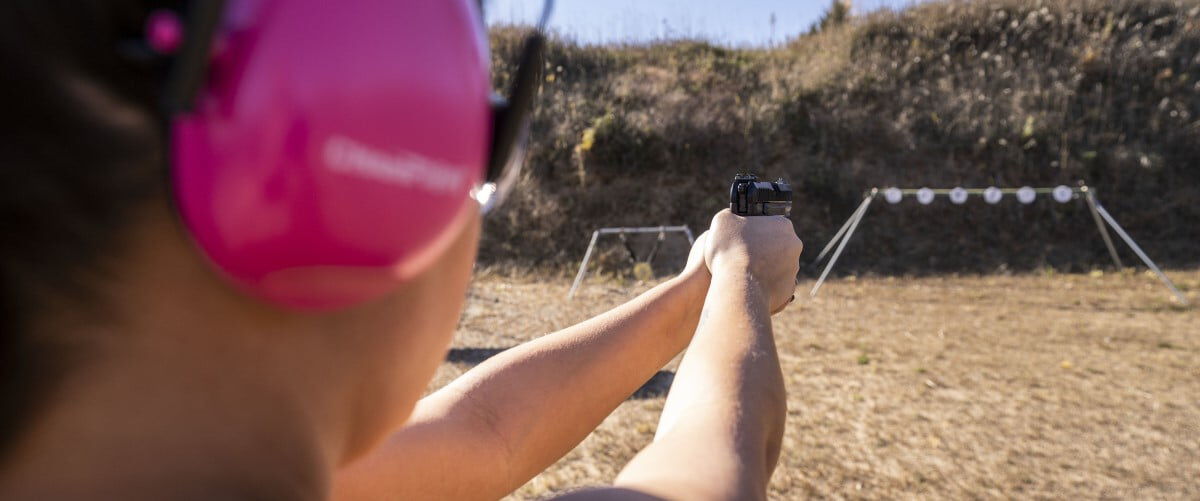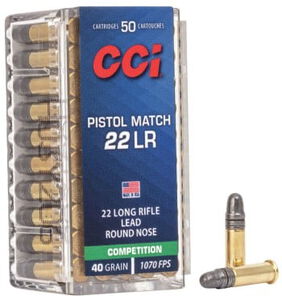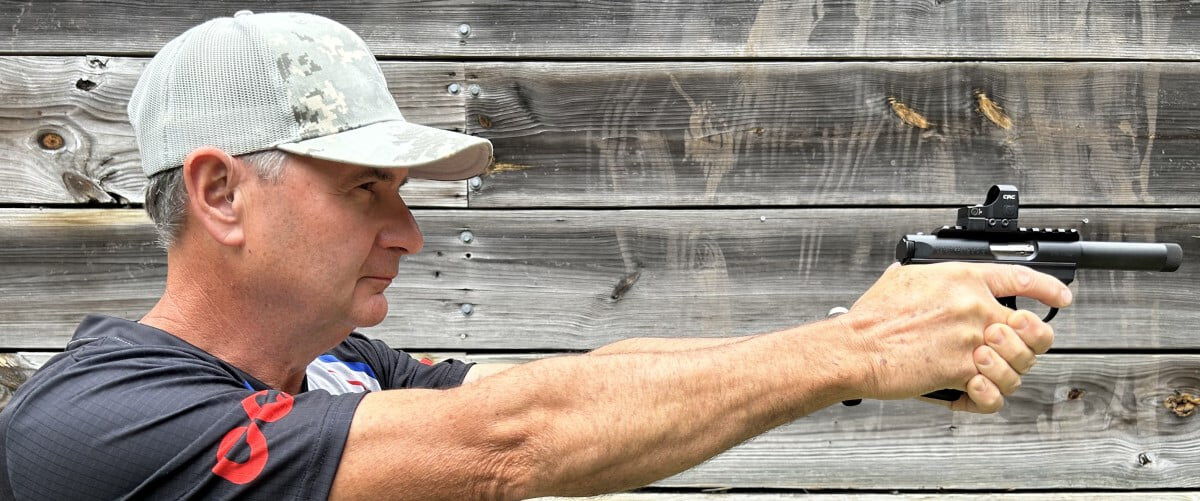
Finding the correct sight picture with iron sights really hasn’t changed much the past few decades. However, that hasn’t made the task easier—even though the act might seem simple on the surface.
“So much has been written about sighting systems,” says rimfire expert and CCI ambassador Todd Jarrett. “When I teach someone what a sight picture should look like, it always depends on the object you’re shooting at. It could be 7 yards away, 70 yards away or 300 yards away.”
Physical Considerations
Much of that begins with the width of the front blade. Jarrett says front blades in most modern iron-sight systems are .090 to .120 inch wide, which is fine for many situations but might be a bit large for finer applications.
“You’re only as accurate as the width of the front blade,” he says. “If you want to become more precise, you need a smaller front sight. Let’s say you’re shooting a golf ball at 10 yards and you have a standard fixed sight that is .120 inch wide. At that distance, the front sight is wider than the object that you’re hitting. You really don’t understand where the bullet is going to land on that sight. It could be left, right, dead center or somewhere in between. Take that same object and expand it to where it is now the size of a softball. That’s the goal for most shooters who are looking for precise accuracy out to 15 to 20 yards, whether hunting or in a practice situation. A smaller front blade will give you better pinpoint accuracy.”
Pistol Match
Settle for nothing less than flawless cycling in your rimfire pistol. Pistol Match ammunition uses precision components and tight tolerances to provide excellent accuracy, feeding and overall performance in competitive handgun shooting.
Buy Now
Of course, shooters must coordinate the front blade with the back portion of the sight, and that’s where confusion can set in.
“You should have an equal amount of light on the back sight and the front sight, and the front sight should be level with the back sight,” Jarrett says. “If I have a firearm that has the ability to adjust the back sight up and down and left right, I want the bullet to land on top of the sight. Think of that as a flat plane with the bullet landing on top of that.”
When shooting at relatively small objects at close distances—a golf ball or ping pong ball at 7 to 10 yards, for example—Jarrett holds the gun so his sights rest at about 6 o’clock on the target.“The back sight and front sight are level, and the bullet lands on top of that,” he says. “As your target expands and becomes larger, you want to transition your sight to the center of that target so the bullet hits the center of it. It all depends on the size of the target you’re shooting.”
Shooters also sometimes struggle with where they should concentrate their focus when using iron sights. Again, Jarrett says, that depends.
“I explain to people there are multiple scenarios,” he says. “Depending on the distance you’re shooting the target—5 to 10 yards—your focus may be on the target, and the sights might be slightly blurry. In other scenarios, your front sight might be extremely sharp, and the target is slightly out of focus.”
The Vison Factor
As middle-aged shooters know, using iron sights becomes more difficult as you age, because it’s difficult to coordinate the back sight, blade and target with sharp focus.

“Typically, when people get into their 40s, their vision has a tendency to change,” Jarrett says. “Their front sight and back sight might not be as clear as it was when they were younger. Go to your optometrist and say, ‘I need to have a set of sights that are clear to the point when I was younger.’ Have him give you a crystal-clear front sight as you grow older. I’ve been doing this last 20 years of my career, and it’s made a huge difference to see the proper front sight and be able to see the target and hit it downrange.”
There is another option, thanks to technology, and Jarrett says shooters should take full advantage of that.
“If you want a modern-day sighting system that will give you the ability to be more precise with your firearm, I would highly consider using a red-dot or a 1-6X scope,” he says. “You don’t have to go to your optometrist. You can just focus on dot or reticle.”